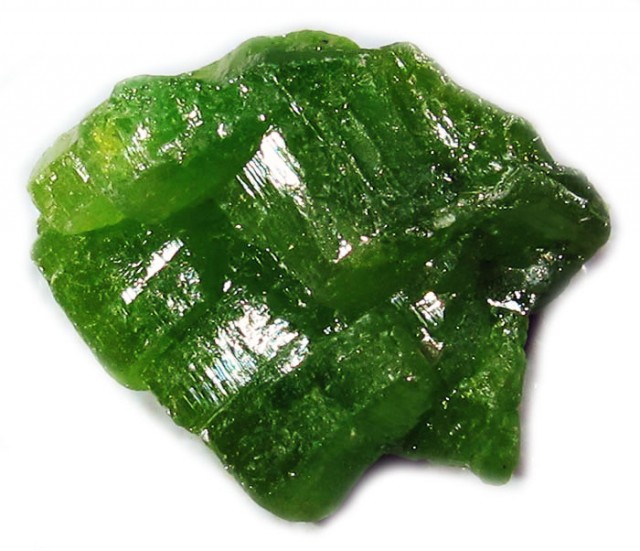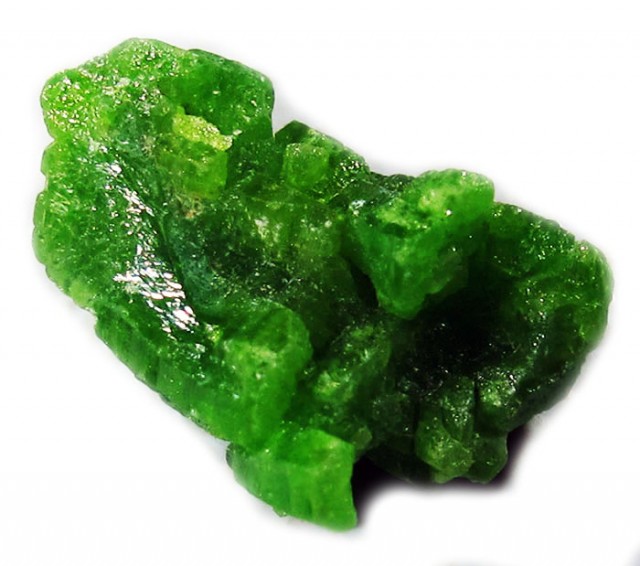
Piromorfita: Propiedades, significados e información mineral
 La piromorfita es un mineral translúcido de la familia de las apatitas. Presenta colores variables, muchos brillantes, pero es conocida por sus brillantes tonalidades verdes o anaranjadas. Estos brillantes ejemplares minerales son apreciados por los coleccionistas, especialmente los cristales verde manzana y las piezas en bruto que presentan tonos naranja y verde.
La piromorfita es un mineral translúcido de la familia de las apatitas. Presenta colores variables, muchos brillantes, pero es conocida por sus brillantes tonalidades verdes o anaranjadas. Estos brillantes ejemplares minerales son apreciados por los coleccionistas, especialmente los cristales verde manzana y las piezas en bruto que presentan tonos naranja y verde.
¿Es la piromorfita una piedra preciosa ? ¡Sí! No se talla con frecuencia, pero sigue siendo común en la comunidad de piedras preciosas y minerales. Sin embargo, es más probable que los coleccionistas o aficionados la conozcan.
¿Listo para descubrir esta joya subestimada y edificante? Esta guía te brindará todos los detalles sobre la piromorfita, sus propiedades curativas, precios y mucho más.
Acerca de la piedra piromorfita
La piromorfita es una gema semipreciosa que puede ser verde, amarilla, naranja, marrón o incluso blanca o incolora. Conocida como el "mineral de plomo verde", sus únicos usos fuera del mundo de las gemas y los cristales son la obtención de plomo.
Este mineral ha tenido multitud de nombres, que explicaremos en profundidad en la sección de Historia. Por ahora, aquí les presentamos algunos de sus numerosos apodos:
Muscoide
Policromo
Brioide
Traubenblei
Sexangulita
Hablando de nombres, quizás sepas que pyr significa "fuego" en griego. Por eso, no es de extrañar que la piromorfita sea una piedra zodiacal para todos los signos de fuego: Aries, Leo y Sagitario. También es una piedra estelar planetaria para el fogoso Marte. Sin embargo, ¡curiosamente, este cristal se asocia tanto con cualidades de fuego como de tierra!
En términos minerales, ¿de qué está compuesta la piromorfita?
Especificaciones y características de la piromorfita
La piromorfita está compuesta de plomo, cloruro y fosfato, con la fórmula Pb₄(PO₄)₃Cl. Pertenece al grupo más amplio de los fosfatos hexagonales, la apatita .
El mineral piromorfita también forma una serie con la vanadinita y la mimetita . La mimetita es increíblemente similar y, a menudo, indistinguible de la piromorfita.
La formación de cristales es común en la piromorfita, aunque también puede formar masas reniformes o esféricas (globulares), junto con drusas de aspecto musgoso. Un nombre antiguo mencionado anteriormente, traubenblei, significa en alemán "con forma de uva", debido a su hábito botrioidal.
El hábito más famoso de la piromorfita es cuando forma un grupo ramificado de cristales prismáticos en forma de barril apilados uno encima del otro.
Sin embargo, los cristales de piromorfita pueden adoptar múltiples formas únicas, como agujas radiantes, pirámides, bipirámides, rociadas y tolvas. Las terminaciones en ambos extremos de los cristales pueden ser huecas, con hoyos como un panal o puntiagudas, por nombrar solo algunas.
Aquí están los datos restantes del mineral piromorfita:
Dureza de Mohs : 3,5-4
Color : Verde claro a verde oscuro, verde hierba, amarillo, naranja, marrón, verde parduzco, gris, blanco, incoloro; Puede ser multicolor verde y naranja.
Estructura cristalina : Hexagonal
Brillo : resinoso, subadamantino, graso o vítreo (vidrioso)
Transparencia : Transparente a translúcido
Índice de refracción : 2.042-2.059
Densidad : 6,5-7,1
Escisión : Imperfecta/Deficiente, unidireccional en [1011] en parte (interrumpida)
Fractura : desigual/irregular o subconcoidea
Raya : Blanca
Luminiscencia : A veces fluorescencia: de amarillo a naranja en SW-UV y LW-UV
Pleocroísmo : Débil o inobservable
¿Existen diferentes variedades de piromorfita? ¡Claro que sí!
Tipos de piromorfita
La piromorfita tiene algunas variedades, que desglosaremos a continuación:
Collieíta : variedad negra que contiene calcio y alrededor de un 4,1 por ciento de óxido de vanadio, descubierta en Escocia por John Norman Collie en 1889.
Nussièrita : variedad de color marrón, gris amarillento o blanquecino que contiene una pequeña cantidad de arseniato, llamada así por su descubrimiento en 1836 en la mina Nuissière en Francia.
Poliesferita (piromorfita con calcio) : variedad rara, incolora y muy rica en calcio con la fórmula Ca2Pb3(PO4)3Cl, llamada así por su forma globular (poli significa “muchos” y sphaira significa “esfera”).
Piromorfita con arseniato : tipo de color amarillo brillante a naranja quemado, famoso por su origen en la mina Bunker Hill en Idaho, EE. UU.
Debemos señalar que algunos no consideran a la poliesferita una variedad de piromorfita, sino más bien un tipo de fosfohedifano.

Significado e historia de la piromorfita
Generalmente, la piromorfita simboliza nuevos comienzos, esperanza y apertura. El lema del cristal podría fácilmente ser «fuera lo viejo, dentro lo nuevo».
El significado espiritual de la piromorfita se vincula con muchos aspectos relevantes de un mundo posterior a 2020 (o más bien posterior a la cuarentena): la curación después de un estrés prolongado, la reactivación de las conexiones perdidas con los demás y el enfoque en el futuro.
Historia
El nombre «piromorfita» proviene de dos términos griegos: pyr, que significa «fuego», y morphe, que significa «forma». Los glóbulos de piromorfita fundidos se recristalizan al enfriarse, de ahí el nombre. El mineralogista alemán Johann Friedrich Ludwig Hausmann eligió el nombre en 1813. Sin embargo, el primer descubrimiento se produjo décadas antes.
Aunque algunos análisis se habían realizado antes, el crédito por el primer descubrimiento corresponde al químico sueco Johan Gottschalk Wallerius, quien encontró piromorfita en Sajonia, Alemania, en 1748.
Wallerius tenía dos nombres para él: grön blyspat, que significa «espato de plomo verde», y Minera plumbi viridis, que significa «mineral de plomo verde». En los años siguientes, surgió un nombre francés: mine de plomb verte, que significa «grafito verde».
En 1761, los términos grünbleierz para “mineral de plomo verde” y braunbleierz para “mineral de plomo marrón” provienen del científico alemán Christian Friedrich Schultze, aunque estos términos fueron atribuidos al geólogo Abraham Gottlob Werner 30 años después.
Otro químico alemán, Martin Heinrich Klaproth, publicó la primera descomposición química completa del mineral en 1784. Una vez más, Klaproth introdujo dos nuevos nombres: fosforsäurehaltig blei para “plomo fosfórico” y grün bleyerz para “mineral de plomo verde”.
¿A qué se deben todos esos nombres? Como la piromorfita se presenta en tantos colores y formas distintos, a los geólogos les llevó tiempo darse cuenta de que todos sus especímenes eran el mismo mineral.
Otros nombres para los “nuevos” minerales que se ha descubierto que son piromorfita (algunos que quizás reconozcas de secciones anteriores) incluyen:
Poliesferita (1832; August Breithaupt, mineralogista alemán)
Nuissierita (1836; Barruel Danhauser, científico francés)
Miesita (1841; Breithaupt; encontrada en Mies, Bohemia o la actual Chequia)
Cherokine (1857; Charles Upham Shepard, mineralogista estadounidense; hallado en el condado de Cherokee, Georgia, EE. UU.)
Plumbeine y Sexagulit (1863; Breithaupt)
Colliete (1927; Robert Brown, científico escocés)
Es evidente que la piromorfita recibió muchos nombres en diferentes momentos. Pero ¿para qué sirve?
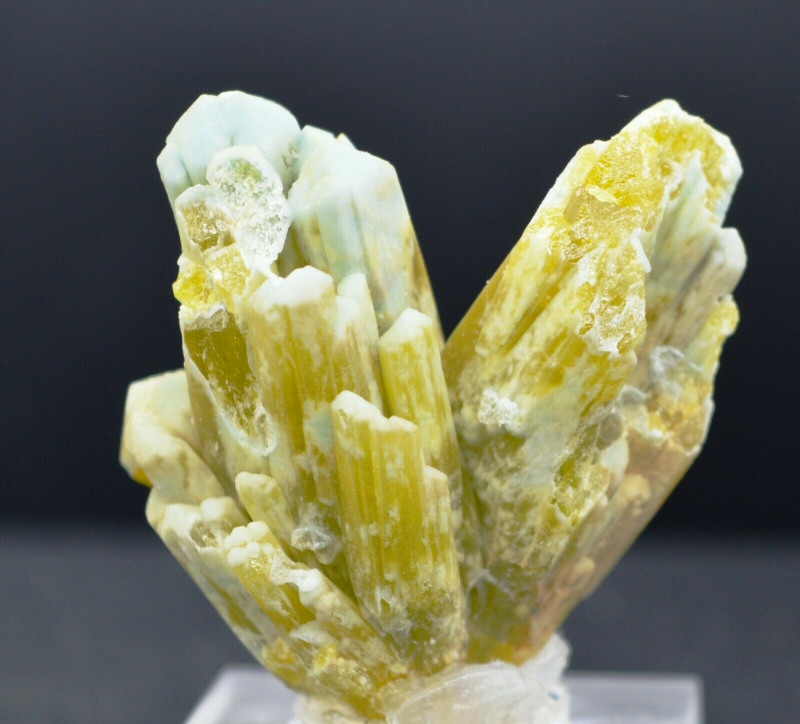
Propiedades curativas de la piromorfita
Según su color y energía interna, ¡todas las gemas pueden ser piedras curativas ! Los diferentes colores de la pirmorfita incluso poseen poderes propios.
La piromorfita incolora o blanca se une a otras gemas blancas para purificar el espíritu y amplificar las energías de otros cristales. Mientras tanto, las de color naranja estimulan la creatividad.
La piromorfita verde posee propiedades como atraer prosperidad y manifestar abundancia. ¿Tienes buena mano para las plantas? Pues bien, ¡la piromorfita también es una excelente compañera para jardineros y amantes de la naturaleza!
¿Para qué se utiliza la piromorfita en la curación física, emocional y de los chakras?
Curación física
Hay muchas dolencias o procesos físicos con los que se dice que la piromorfita ayuda, como por ejemplo:
Escalofríos
Enfermedad de las encías
Absorción de vitaminas
fatiga visual
Fuerza muscular y coordinación
Función del hambre y el metabolismo
dolores de cabeza
Hipertensión
Enfermedades estomacales (por ejemplo, síndrome del intestino irritable o enfermedad celíaca)
Sanación emocional
¿Te has sentido desorientado o desmotivado? Se dice que la piromorfita te llena de propósito y perseverancia para alcanzar tus sueños. También puede fomentar una actitud optimista y una apertura emocional.
Si te estás recuperando de momentos difíciles, este cristal, que te brinda apoyo y te nutre, te recuerda que la sanación es posible. Los terapeutas de cristales lo usan para superar cualquier obstáculo en tu camino de sanación.
Sanación de chakras
Los chakras son centros de energía a lo largo del cuerpo que permiten que las energías fluyan con fluidez. Si están bloqueados, las piedras de chakra pueden abrirlos. Dadas las tonalidades amarillas y verdes comunes de la piromorfita, es una piedra de chakra que armoniza los chakras del plexo solar (amarillo) y del corazón (verde).
El plexo solar es el centro de la identidad y el propósito, mientras que el corazón gobierna la aceptación y el amor. La piromorfita, al equilibrarlos, permite que la pasión se vincule con el propósito para que puedas alcanzar con confianza tus sueños más auténticos.
Propiedades de la piedra preciosa piromorfita
Las propiedades relevantes de la piedra preciosa para determinar el valor de la piromorfita son su color, corte, transparencia y brillo.
Color
La piromorfita es alocromática, es decir, incolora en estado puro. Aunque la piromorfita blanca no es rara, suele ser verde.
Los tonos blancos son más comunes en las zonas menos oxidadas de los yacimientos, mientras que los tonos verdes son comunes en las zonas altamente oxidadas. Una piromorfita verde estudiada solo mostró impurezas de óxido de hierro, lo que la convierte en el probable agente colorante.
Sin embargo, las impurezas y el color no son uniformes en la piromorfita, por lo que algunos teorizan que fallas localizadas en la red cristalina causan la coloración. Sin embargo, esto podría depender de la muestra.
De todos modos, las impurezas comunes de piromorfita incluyen:
Arsénico
Calcio
Cromo
Flúor
Radio
Vanadio
Las piromorfitas más valiosas tienen una coloración verde o amarillo anaranjado muy saturada.
Cortar
El facetado no es habitual en la piromorfita, no sólo porque es blanda sino también porque sus cristales en bruto son muy cautivadores.
Los ejemplares facetados suelen cortarse a partir de especímenes mezclados con plumbogummita amarilla, un poco más dura. Los cortes facetados más comunes son los de forma trillón y baguette. Los cabujones de piromorfita también son poco comunes.
La mayoría de las joyas de piromorfita utilizan cristales en bruto.
Transparencia y brillo
Tanto la transparencia como el brillo afectan el brillo general de una gema. La piromorfita transparente es rara y alcanza precios elevados, aunque los cristales con buena translucidez pueden ser valiosos.
Aunque la piromorfita puede tener un brillo casi diamantino (adamantino), también puede ser resinosa, vítrea o grasosa. Las piedras de piromorfita vítreas (vidriosas) o subadamantinas son las más valiosas.
Antes de que llegue a nuestras manos, ¿cómo se forma la piromorfita?
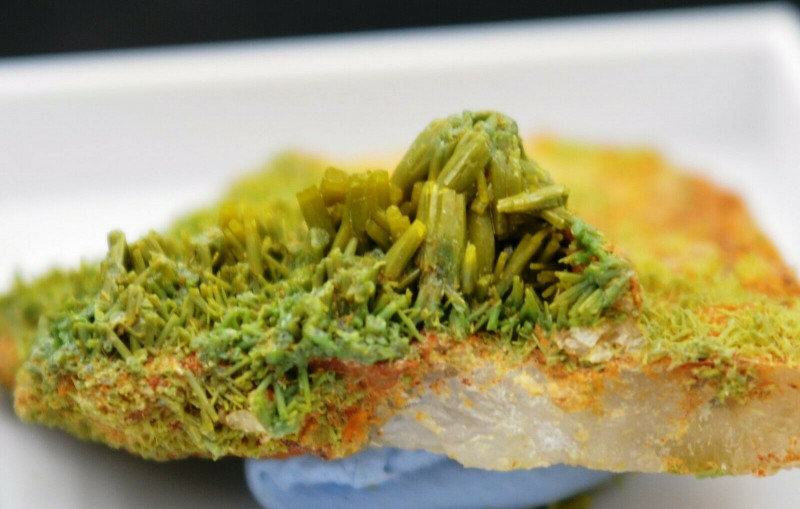
Formación y fuentes de piromorfita
Como mineral secundario, la piromorfita se forma cuando otros minerales (primarios) se alteran. En concreto, los minerales solubles de plomo se fusionan con un fosfato, transformándose en piromorfita.
¡El fosfato puede incluso ser estiércol! De hecho, a zonas como suelos contaminados con plomo se les suele añadir fosfato para prevenir la contaminación por plomo, ya que esto convierte el plomo en piromorfita. Este es un método para crear piromorfita (de forma algo sintética).
Los mineros encuentran piedras de piromorfita en áreas oxidadas de depósitos de plomo, pero ¿dónde se puede encontrar piromorfita geográficamente?
Ubicaciones mineras
Una característica única de la piromorfita es que tiene más de una o dos fuentes de "mejores". Si bien algunos países tienen localidades de "clase mundial" (WC), casi todas las localidades de piromorfita se especializan en un tipo de piromorfita:
Australia — WC | Amarillo anaranjado brillante; Con malaquita y/o cerusita
Canadá — Ejemplares raros de matriz
China — WC | Verde manzana, brillante; Druzy; Verde y naranja; Verde amarillento brillante
Chequia — Verde brillante; Esferas de miesita gris raras
Francia — WC | Druzy; Cúmulos prismáticos; Amarillo verdoso brillante
Alemania — WC | Grande, marrón, con forma de barril
Idaho, EE. UU. — WC | Redondeado, brillante, con arseniato; Verde y naranja; Brillante, globular; Cristales de color verde amarillento; Cúmulos esféricos de color amarillo anaranjado
Italia — WC | Saltamontes amarillo o verde amarillento con forma de flor; Glóbulo redondeado o mamilar
México — Cúmulos de cristales; Verde claro con wulfenita
Marruecos
Pensilvania, EE. UU. — Histórico; Verde oliva
Rusia
España
Reino Unido
Zambia — Platos grandes
¿Listo para explorar la piromorfita en venta? Analicemos qué esperar en cuanto a precio.
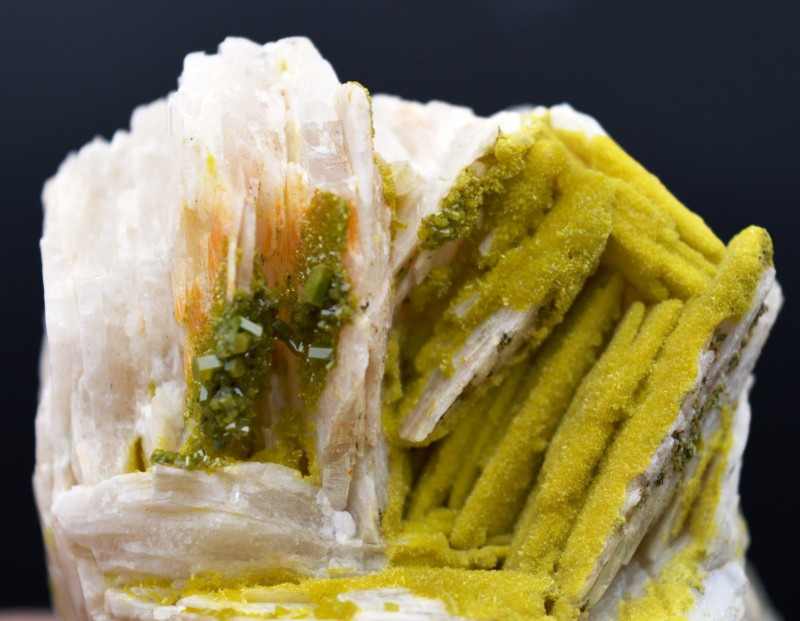
Precio y valor de la piromorfita
La piromorfita tiene rangos de precio por quilate bastante asequibles. Pero recuerde, su alta densidad (peso) significa que los cristales serán más pequeños que otras gemas del mismo peso en quilates. Los mejores ejemplares en bruto pueden alcanzar solo 3 cm de altura, pero pueden alcanzar entre $15,000 y $20,000.
Las opciones facetadas son raras y valiosas, alrededor de $ 65 por quilate.
La variedad real viene con piromorfita en bruto de diferentes lugares, que se enumeran a continuación:
China : $0,25-$2,50 por quilate
Chequia : 0,70-2 dólares por quilate
Francia : 0,07-1,30 dólares por quilate
Alemania : $0,20-$1,20 por quilate
Idaho, EE. UU .: entre 0,60 y 5,50 dólares por quilate
Reino Unido : 1-5 dólares por quilate
Australia : $0,05-$0,45 por quilate
Los colgantes de cristal de piromorfita en bruto varían ampliamente, desde $ 15 a más de $ 300, dependiendo del tamaño del cristal y las configuraciones de metal.
Cuidado y mantenimiento de la piromorfita
Ante cualquier riesgo de intoxicación por plomo, es importante hablar sobre la toxicidad de la piromorfita. Aunque el contenido de plomo del cristal es tóxico si se ingiere o inhala, es completamente seguro mantenerlo en exhibición (con o sin estuche). Simplemente lávese bien las manos si lo toca.
En cuanto al cuidado de las piedras preciosas , la piromorfita es frágil y su dureza es baja. Por lo tanto, manipúlela con cuidado.
Puede limpiar la piromorfita con un paño suave y sin polvo o sumergirla en Iron-Out cada hora. Una vez limpia, enjuáguela con agua y déjela secar al aire.
Evite el contacto de la piromorfita con ácido nítrico, agua carbonatada o hidróxido de potasio. Guárdela separada de otras gemas.
¿Qué piromorfita te enciende?
Aunque tiene muchos alias, el nombre de la piromorfita refleja a la perfección su forma siempre cambiante y sus ardientes beneficios. Un hermoso cristal verde permite que sus energías calmantes y de apoyo encapsulen tu espacio, mientras que una piromorfita naranja llameante puede despertar tu creatividad y fuerza de voluntad. ¡Suscríbete!
Buscar en el Gemstone Encyclopedia
Subastas relacionadas
Artículos relacionados
Cada persona tiene una piedra preciosa que corresponde a su signo zodiacal. Estas también se conocen como tu Piedra Estelar. Aprende más sobre estas piedras y descubre cuál es tu Piedra Estelar.
10th May 2018
Originalmente, las piedras de nacimiento o gemas se asociaban con un signo zodiacal o el mes de nacimiento de una persona. Descubra cuál es su piedra y vea las que tenemos a la venta.
8th Feb 2021
Existen muchas herramientas en el mercado para analizar piedras preciosas, pero ¿cuáles son las principales necesarias para un análisis simple? Veamos cuatro herramientas para analizar piedras preciosas.
4th Mar 2020
últimos artículos
Las piedras de flores de crisantemo son maravillas naturales que presentan un patrón floral de calcita blanca, celestita o andalucita sobre piedra caliza negra o lutita.
13th Jan 2026
La piedra solar reticulada arcoíris es una variedad de feldespato con tres magníficos efectos ópticos causados por la presencia de diversas inclusiones. Su vibrante colorido y su patrón reticular la convierten en una rara joya de colección.
12th Jan 2026
La thulita es una piedra preciosa noruega rara que exhibe un tono rosado vibrante de la familia de minerales zoisita que se usa comúnmente en engastes de joyería y colgantes.
6th Jan 2026
Categorías de artículos
How To's is where you will find helpful articles from gem Rock Auctions on how to cut gemstones, select gemstones and buy gemstones.
9 Artículos

